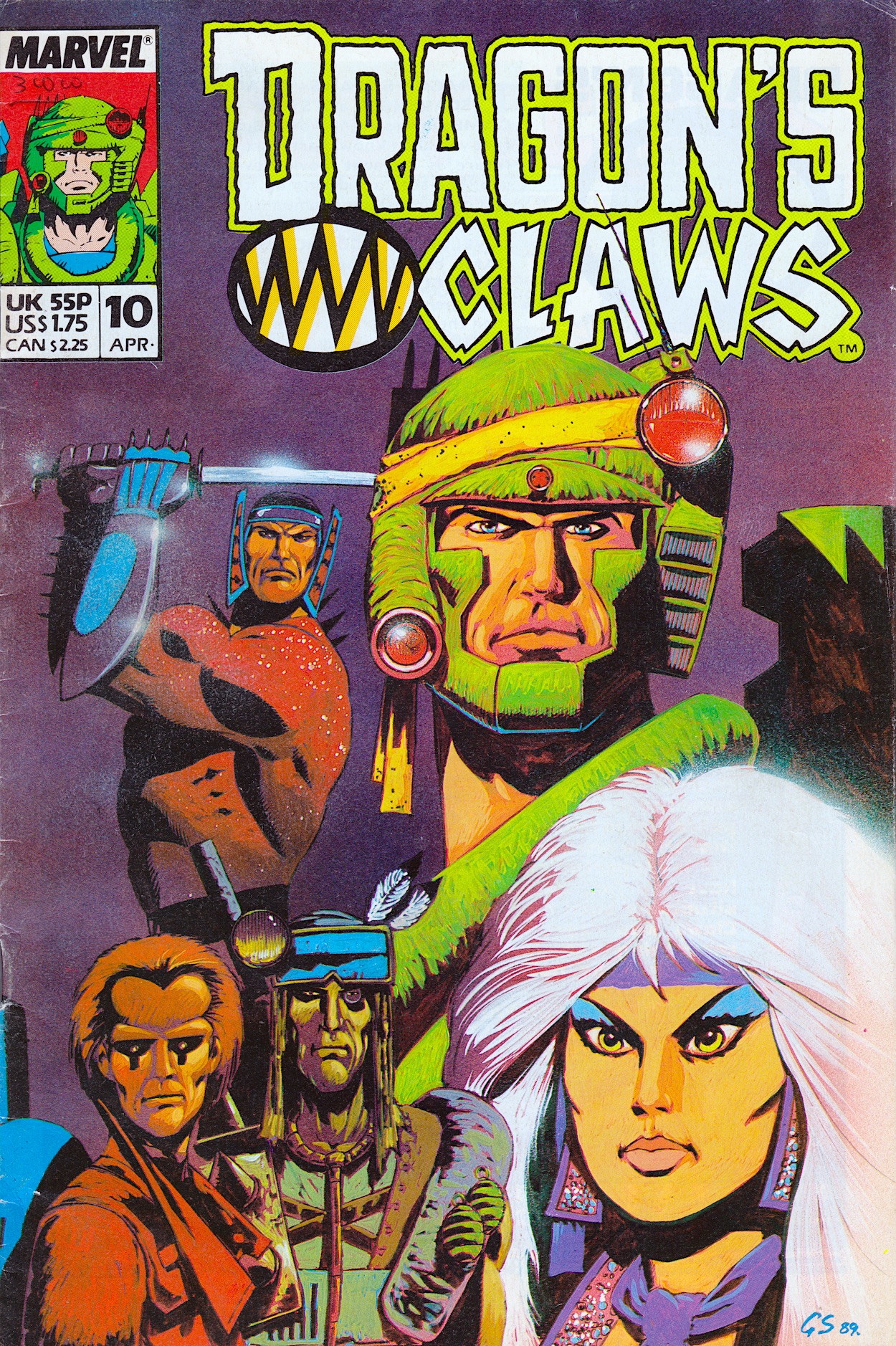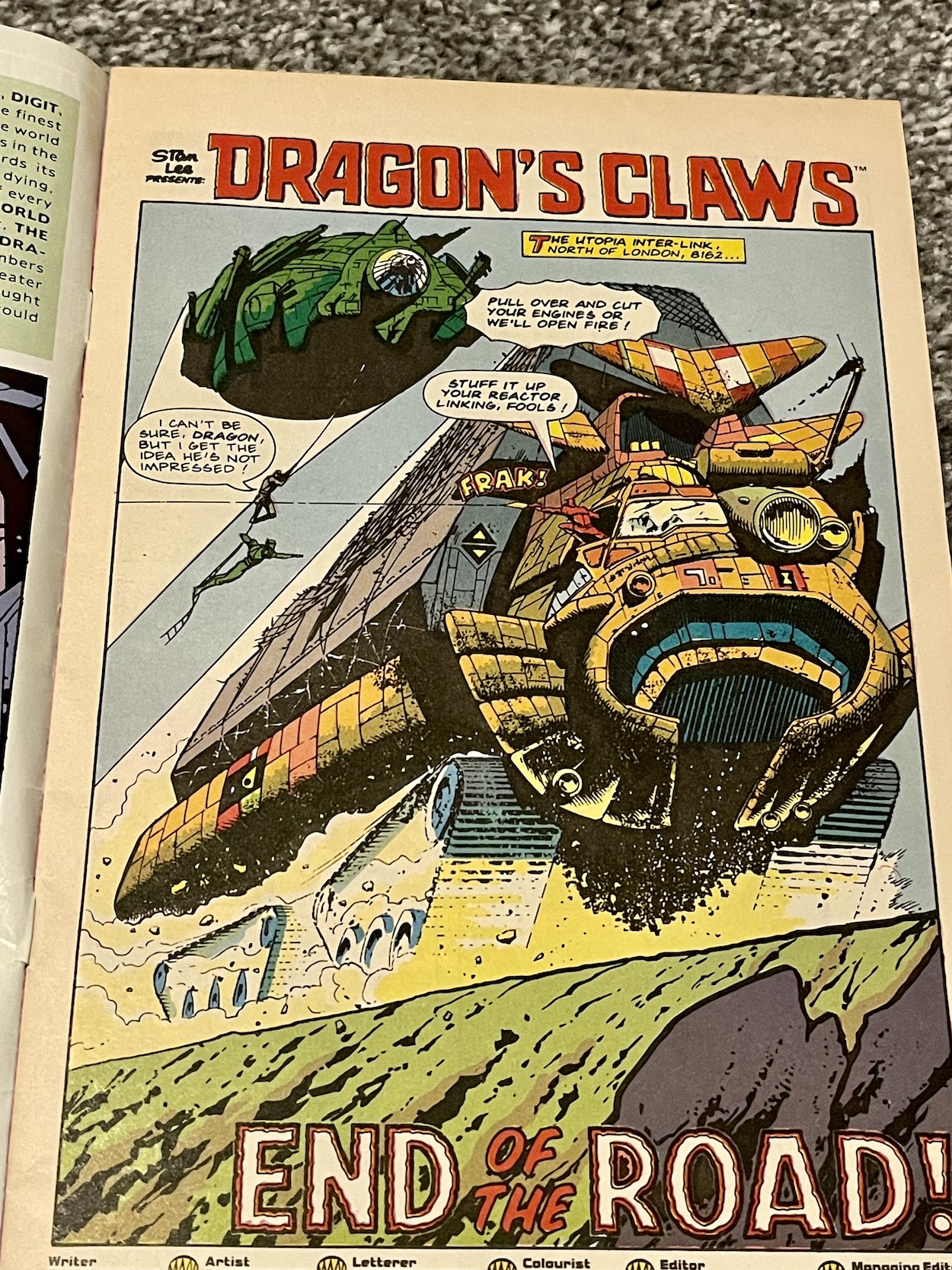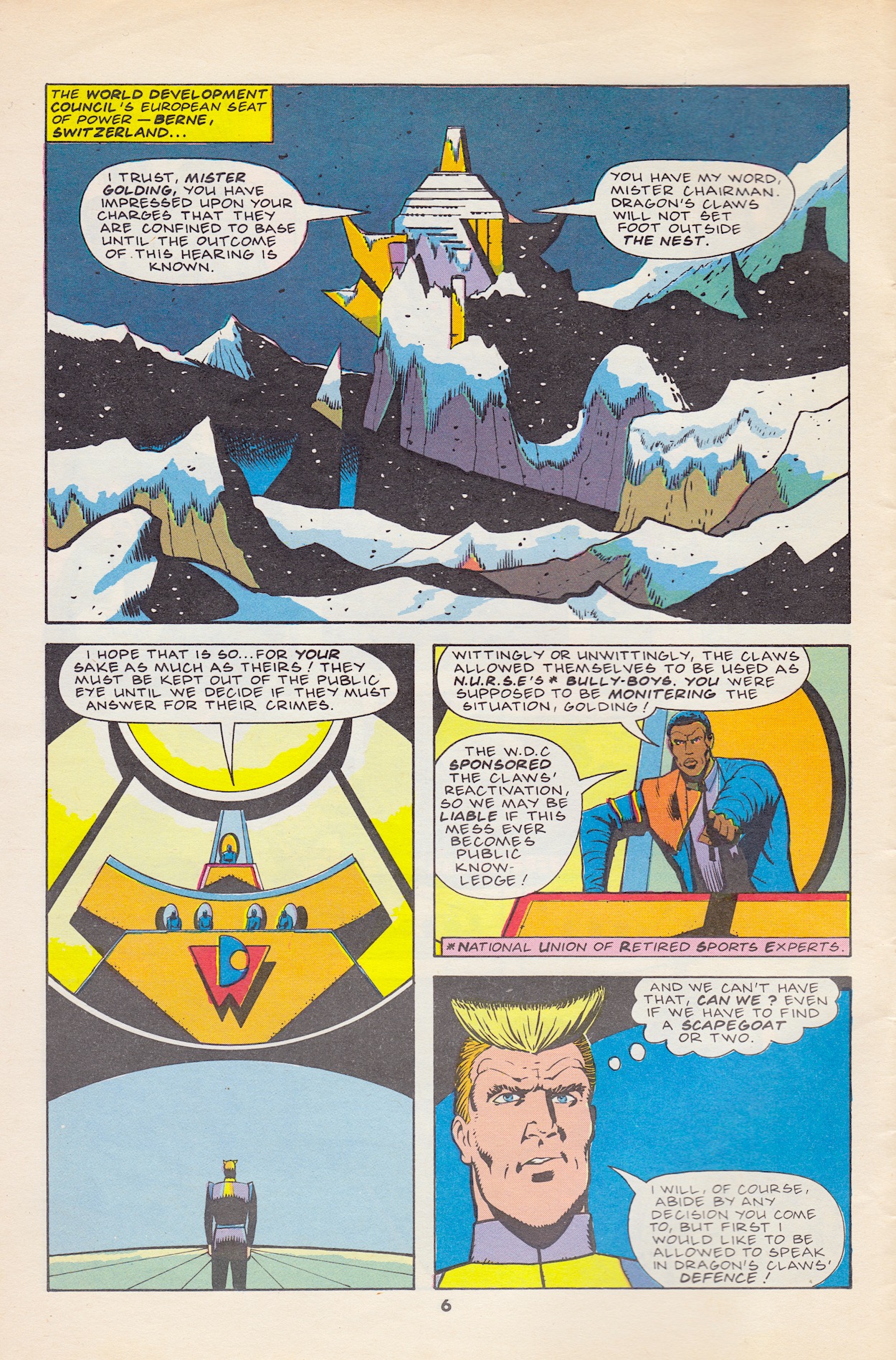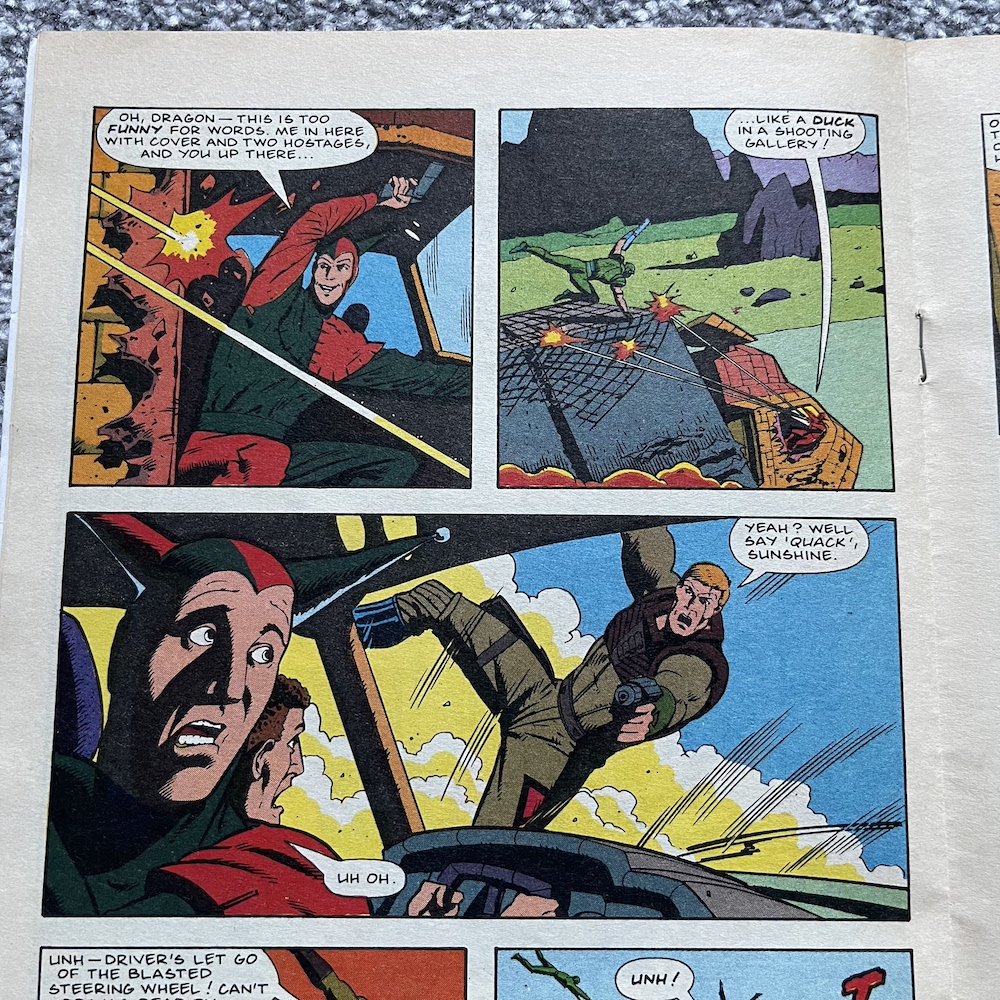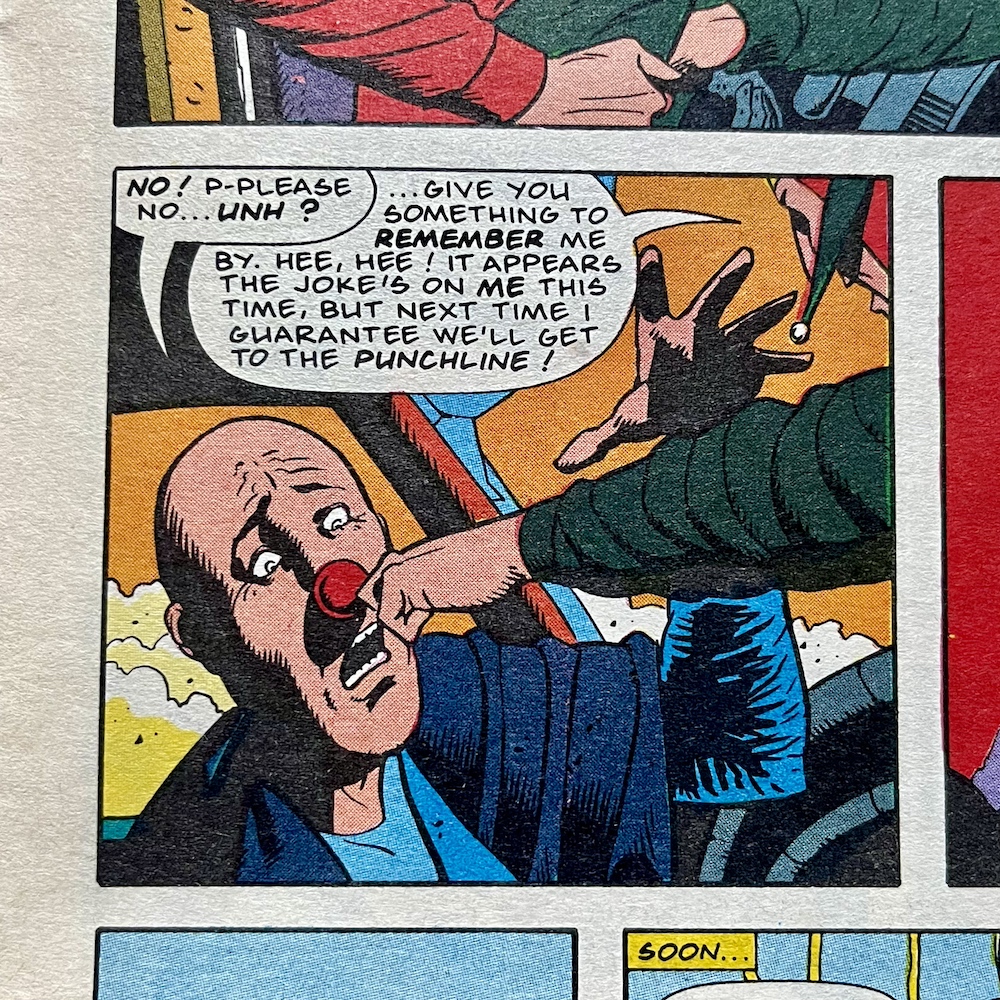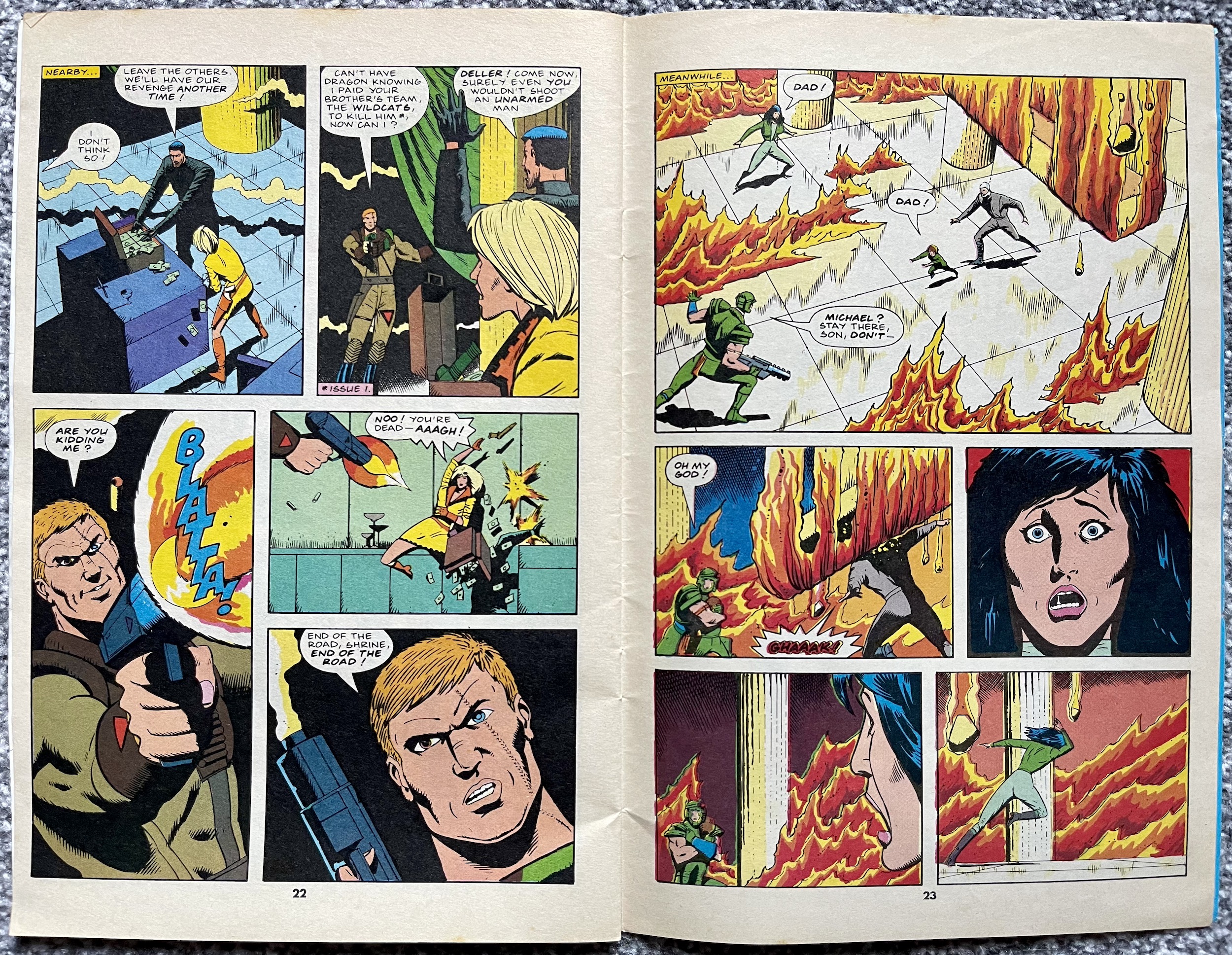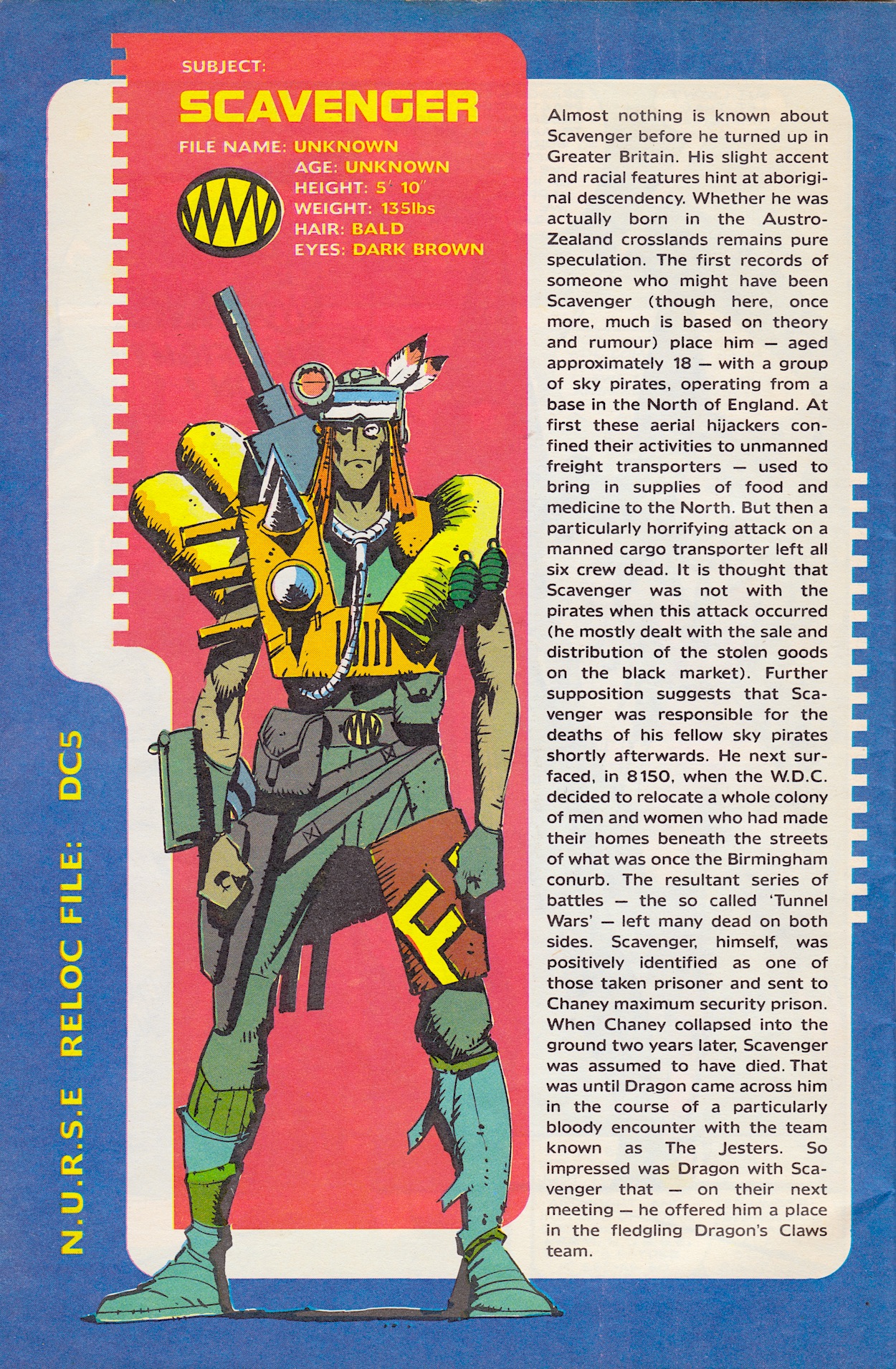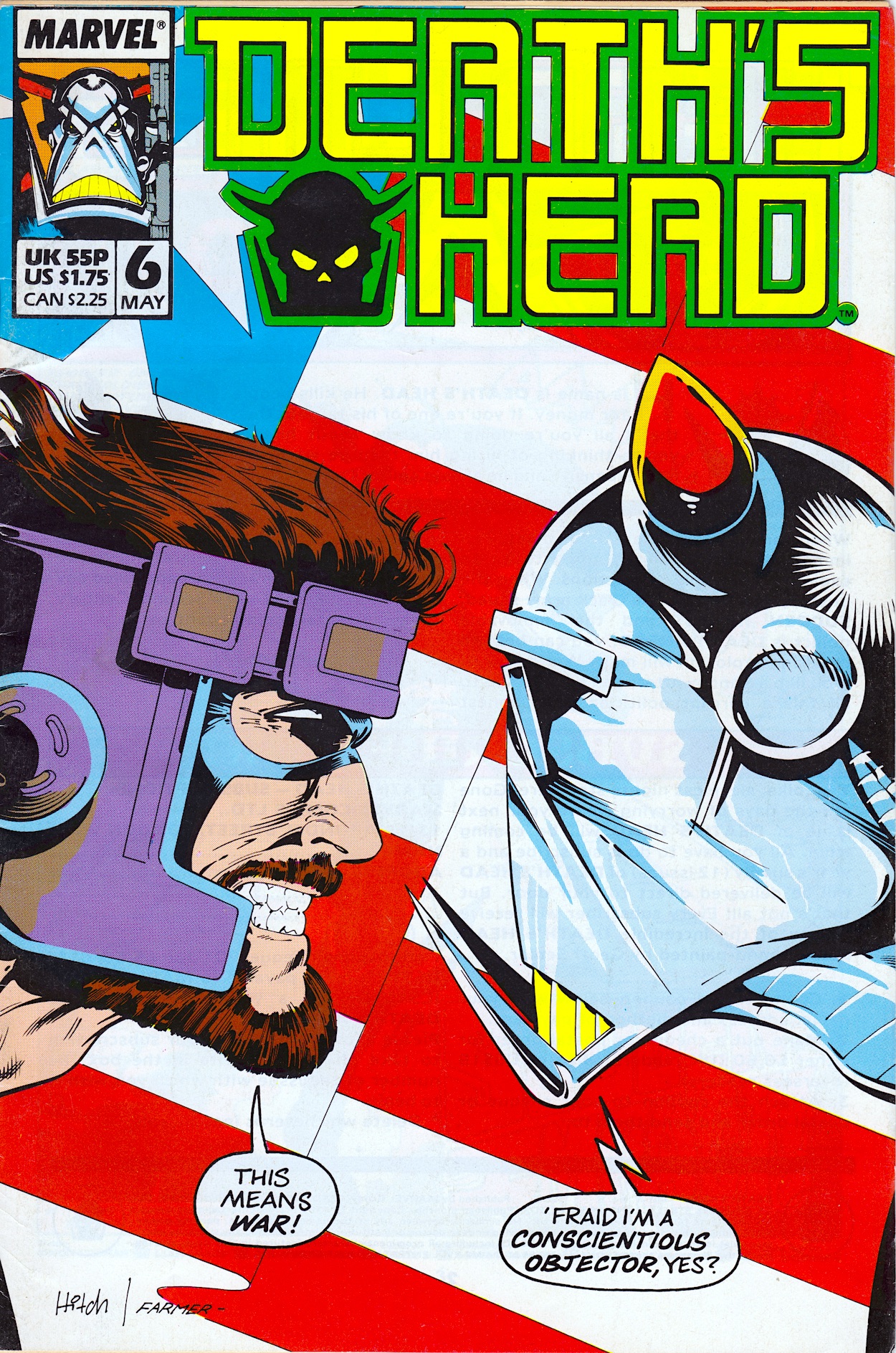
The first time K.I.T.T. (programmed for human preservation) faced off against the evil prototype K.A.R.R. (programmed for self-preservation) in season one of Knight Rider the paradox of “What happens when an irresistible force meets an immovable object?” was brought up. As a huge fan of the show, when I opened this sixth issue of Marvel UK’s Death’s Head its inclusion as the opening of the editorial made me smile. The militia group Sudden Impact are promoted as equals to the Peacekeeping Agent, so while their cliffhanger last time felt lacking it’s made up for here.
They’re a clichéd lot though, with an overly shouty commander and a ragtag collection of men and women that look like they’ve walked straight out of an 80s action figures catalogue. You might also notice the art style is somewhat different to what we’re used to. That’s because this issue is pencilled by Liam Sharp (Judge Dredd, Batman, Spider-Man), inked by Paul Marshall (Mean Machine, Firekind, Sinister Dexter) and coloured by Louise Cassell (Doctor Who Classic Comics, Transformers, Captain Britain) alongside usual letterer Annie Halfacree and all under the auspices of editor Richard Starkings. The cover above is by the usual pairing of Bryan Hitch and Mark Farmer.
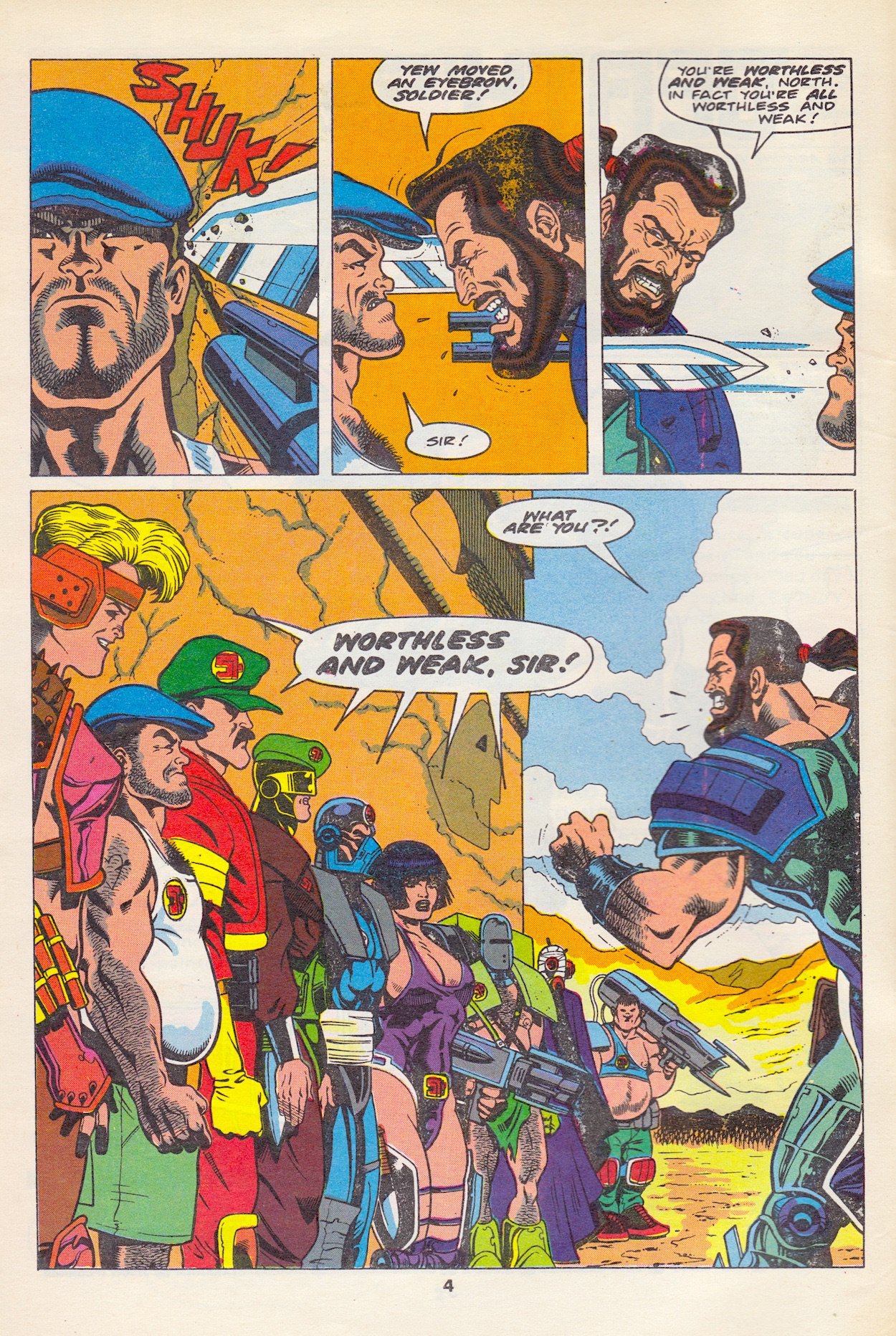
An army general arrives with some troops and confirms he’s there to hire Sudden Impact to tie up some unnamed loose end, which I initially thought would be Death’s Head. His men start to bad-mouth the mercenaries’ looks but Mayhem (their very original-named leader) gives them the go ahead to fight back. Physically. Soon the troops, who vastly outnumbered them, are all beaten but the general doesn’t care. He just agrees Mayhem’s team are the right people for the job.
We catch up with our anti-hero in a luxurious compound in the middle of nowhere, where he’s been hired to ensure a nervous government witness gets to trial. It’s a cushty job for once, so far involving nothing more than relaxing and watching TV. But we know a large team of maniacal, murderous mercenaries are on their way and it would appear he’s the last line of defence. Surely an impossible mission? It’s just as well he has Tom Cruise there too!
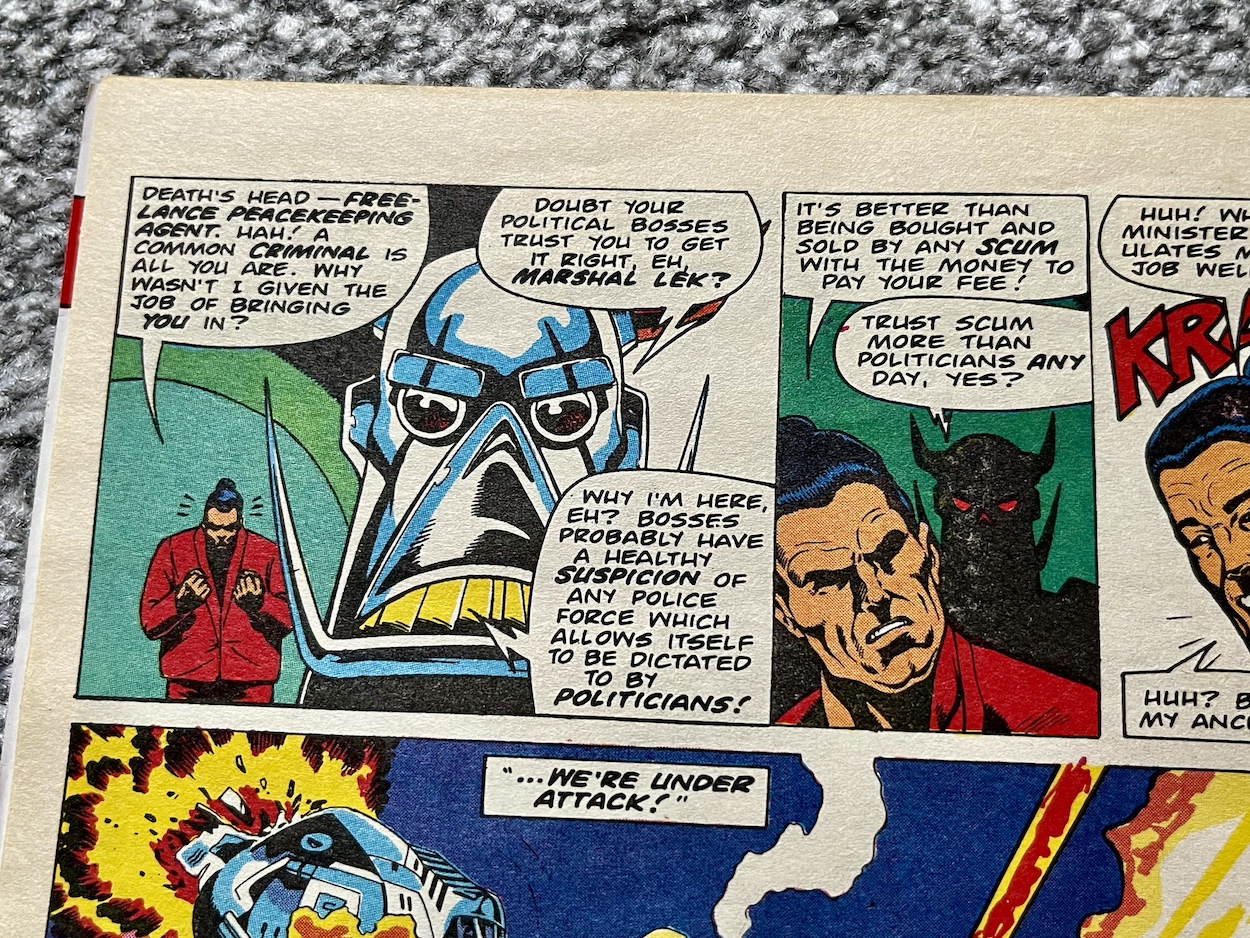
As writer Simon Furman describes it in the following panels, the attack is less a battle and more of a slaughter. Tom… I mean, Marshal Lek and his politicised police force are no match for Sudden Impact and the star witness begs Death’s Head to do something. So naturally he responds by telling him they’ll go and find the chess set! We’ll get back to that.
First we get the plot laid out for us as we meet Minister Carson, a corrupt official who has been selling parts of the US armed forces to foreign adversaries for substantial payments. The General we met earlier actually thinks this wouldn’t stop a lot of Americans from still voting for him. Given today’s climate and the blind followers of certain presidential candidates in that country this isn’t as far fetched as it once may have been.

Before we return to the action we catch a quick glimpse of Spratt back at their office. After not appearing at all last month and on one solitary page this time around it feels a bit like he’s taking a back seat after being promoted as Death’s Head’s partner in earlier issues. Such a shame. Here he’s reduced to trying to answer the phone while being attacked by their rescued vulture (see #5), only to discover someone on the line addressing Death’s Head as “my darling”.
That’s all we get of that particular storyline for this issue before we return to that chess set. Yep, he wasn’t kidding. Of course Lek isn’t too happy but you can’t fault Death’s Head’s logic below, and it’s nice to see him back to working to the letter of his contracts which was such an important rule in #1 and yet seemed to be broken or forgotten about last time.

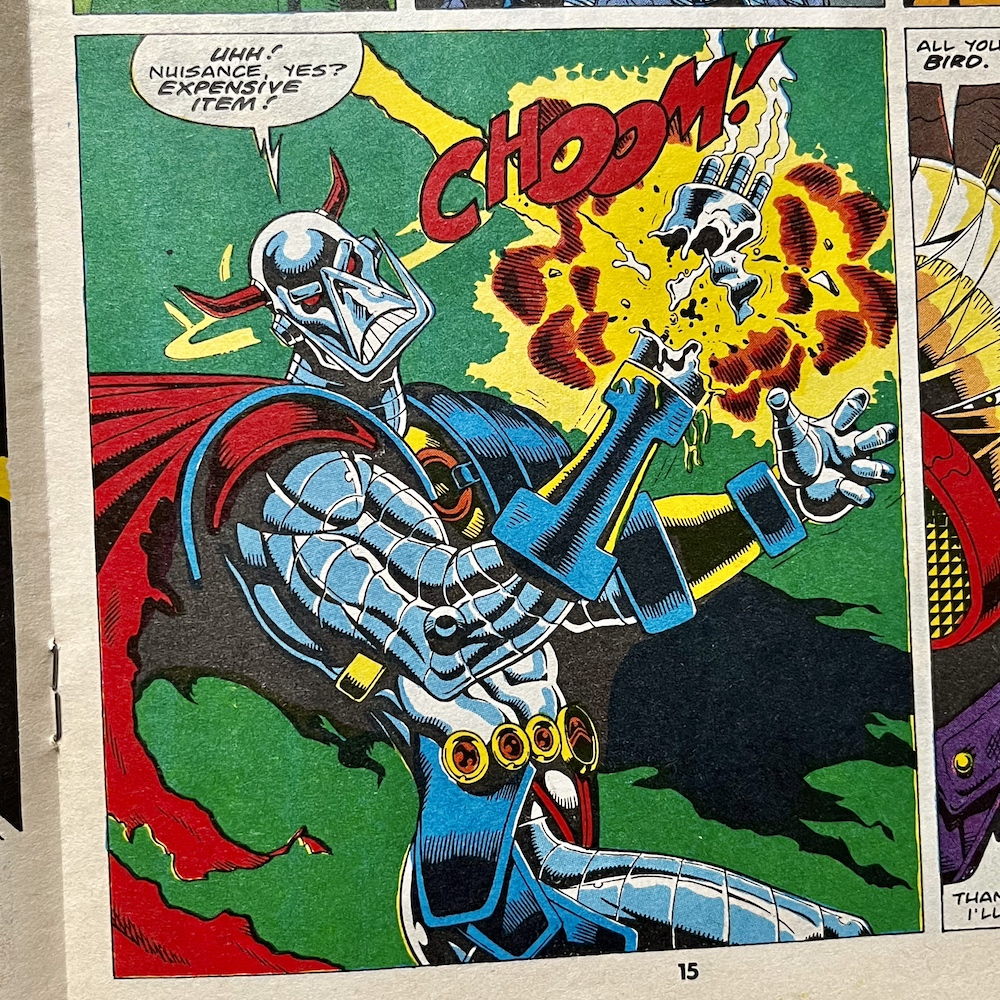
With Lek’s small army taken out already and the mercenaries breaking through into the safe room, it all rests on the star of the comic to take down Sudden Impact one member at a time. What we’re treated to next are several pages of perfect 80s action, similar to how certain issues of Dragon’s Claws (also written by Simon) felt like 80s action movies translated directly to the page. What this means for this character is one exciting take down after another, each accompanied by a Schwarzenegger-like punchline.

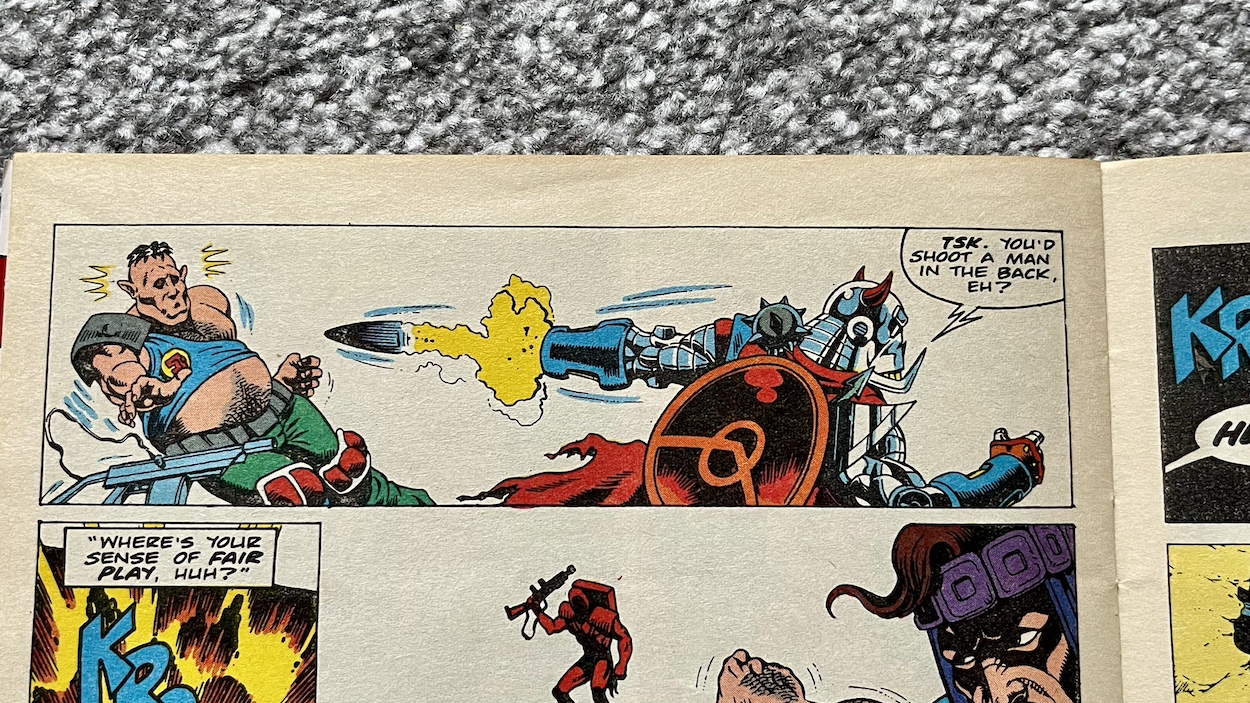
With six now taken out already a disappointed Death’s Head laments about how they were meant to be unstoppable but yet it’s all proving too easy for him. Missile launchers, flame throwers, aerial attacks, stealth moves… nothing works and we see the team reduced to its final members over these pages. While it’s all great fun I can’t help but wonder would it have been more exciting if this had been one seemingly unstoppable mercenary rather than a group?
As it stands, Sudden Impact seem little more than cannon fodder, but if it had been Mayhem himself taking up all these pages with attempts to kill Death’s Head, relentlessly coming back for more, it may have felt more dramatic. However, it’s great fun and if there’s anything we’ve learned about the comic by this sixth issue it’s that fun is the main aim here, not drama.
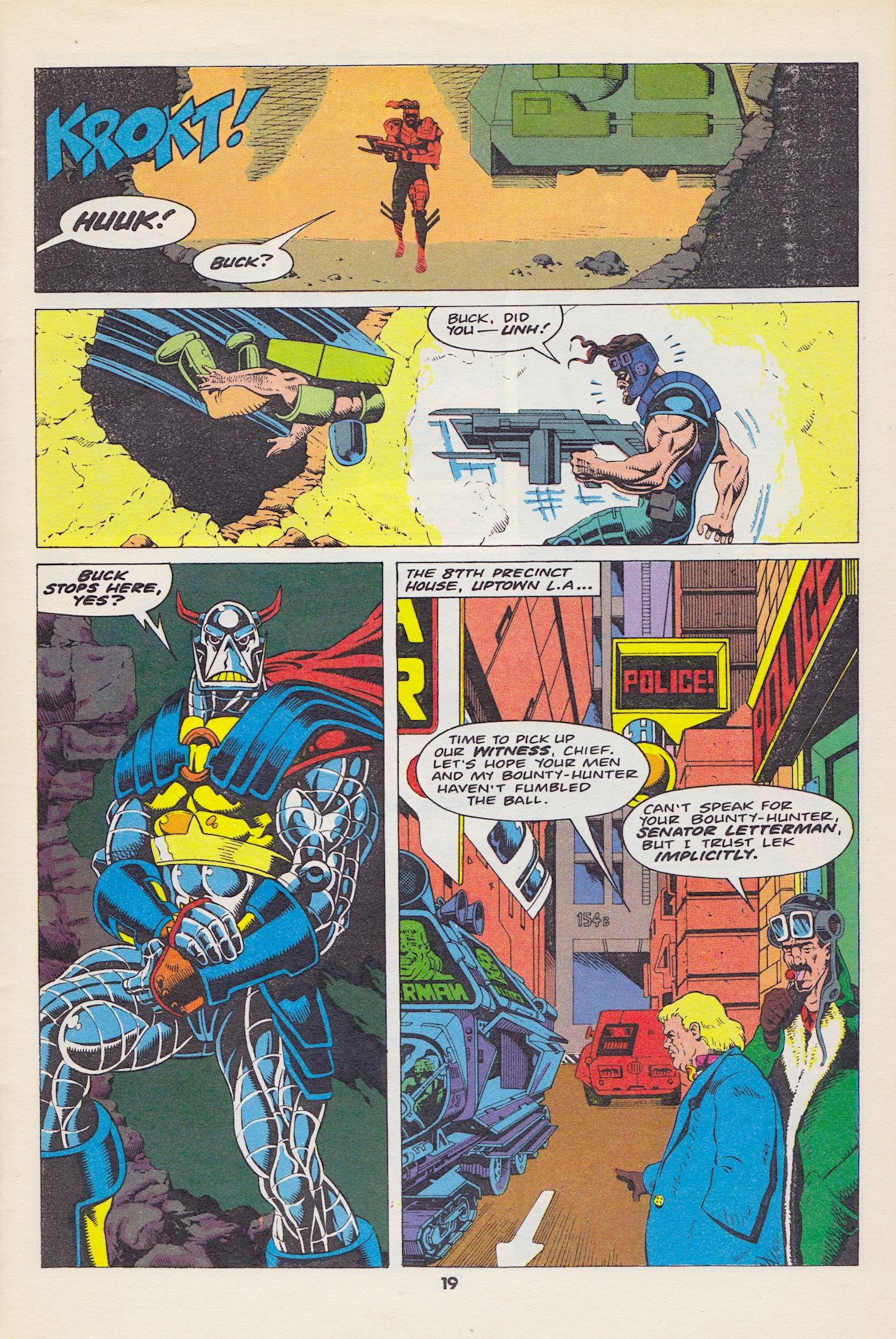
So who cares if they’re cannon fodder? Who cares if it could’ve been more dramatic with one merc? With killer lines like “Buck stops here, yes?” this is so enjoyable and so reminiscent of the aforementioned Arnie and his over-the-top action flicks of the time that the only thing I’m unhappy with is the fact there are only four more issues to go. It’s a title that really stands out as something different, something only Marvel UK could’ve produced.
This is one of the best issues of Death’s Head yet for sheer fun value
We then get to briefly meet the senator whose witness is at the centre of all this violence and it appears our star isn’t exactly working for the good guys. Senator Letterman knows the only difference between Marshal Lek and terrorists are their uniforms and when he realises the extra law enforcement he ordered to escort him are handling a massive riot elsewhere in the city he demands they be called away.
The citizens can kill each other for all he cares, they’re all expendable as long as they’ve already voted for him, and the police aren’t the public’s, they’re his. Whether we see this horrible little squirt again or whether he’s just an example of the larger government I don’t know, but it does show that Death’s Head really is an anti-hero rather than an out-and-out goodie. He might do what’s morally right when the situation calls for it, but he’ll take a contract worth good money from anyone who can afford him. It makes for a more interesting character.
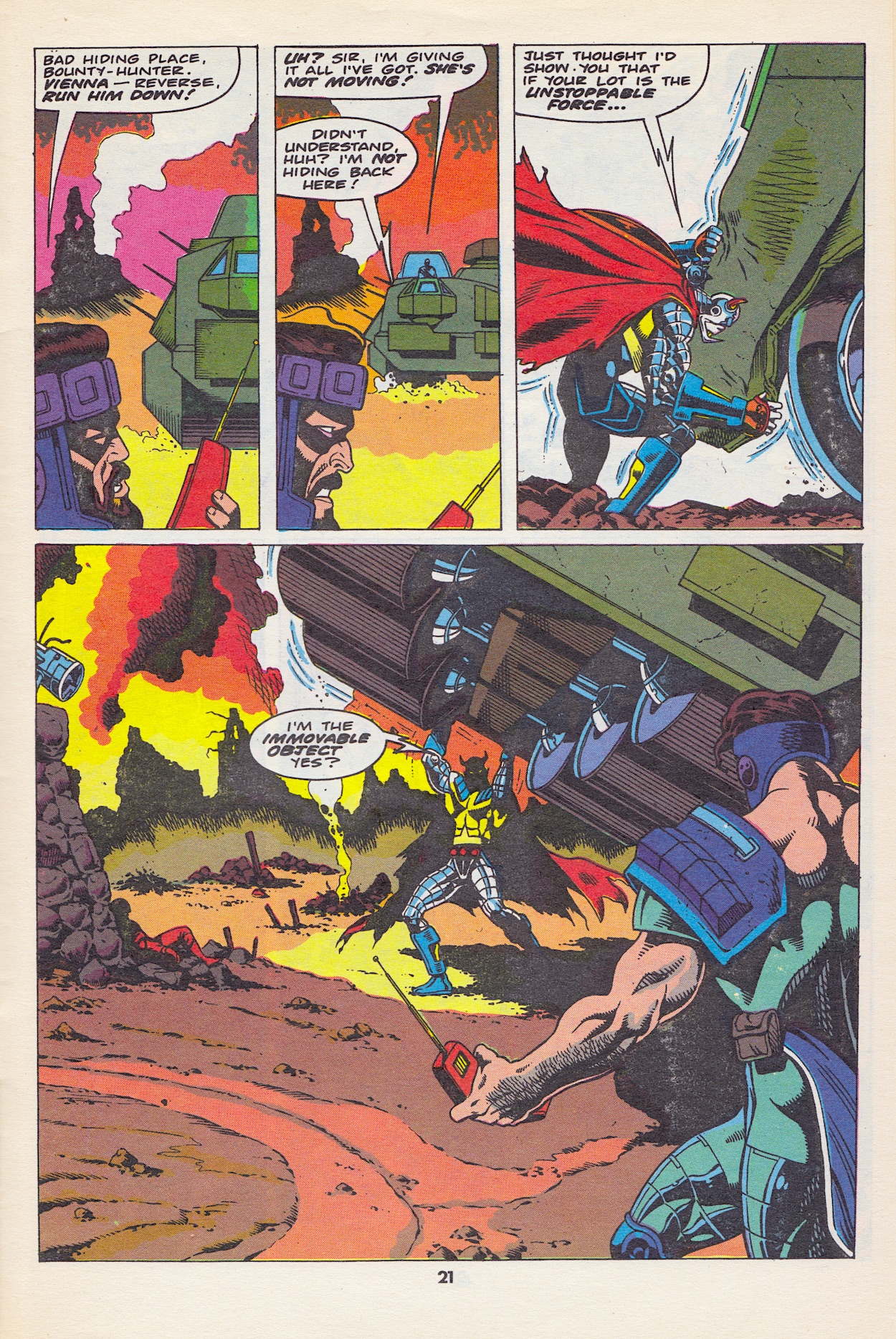
At the top of this review I mentioned a classic episode of Knight Rider and how excited I got with the editorial of this issue. Well, I can only imagine how excited I’d have been reading the page above (which ends the fight) without the foreknowledge of that introductory page. Also, on the penultimate page of the story the “conscientious objector” line from the cover is meant to be the final gag of the story. A shame both of these moments were somewhat spoiled already then.
But in a rare case for our main character, in this story he fails to do what he was hired to do. Beaten, Mayhem asks Death’s Head how many of his team has he killed. The tally stands at eight, to which Mayhem simply replies “Nine” before the building holding the witness explodes. Death’s Head had missed one. Lek laments, he believes Letterman will be taking a contract out on him next. As for Death’s Head’s response, it’s as typical as you’d expect from him.
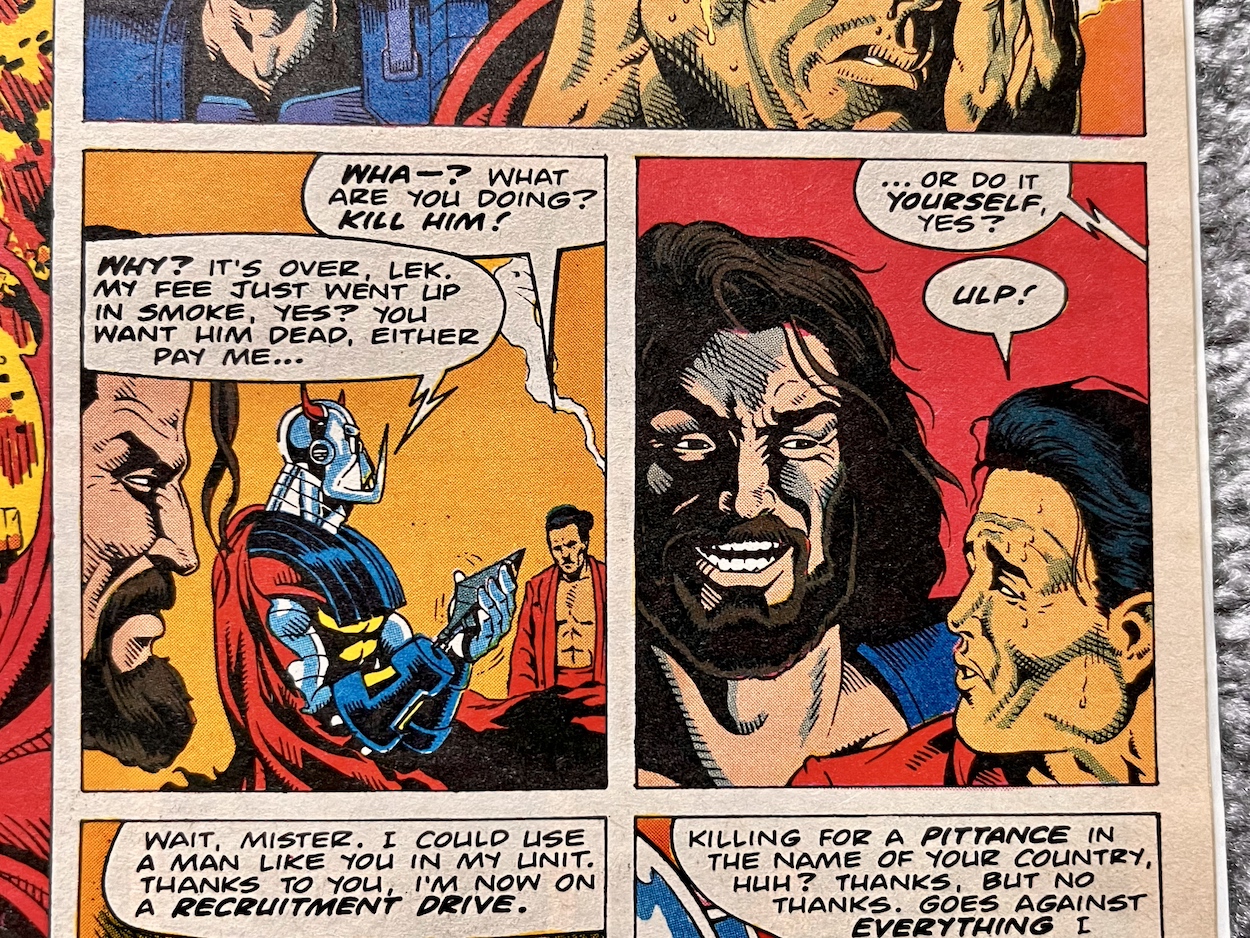
As he simply packs up and leaves Lek with Mayhem I’ll admit I smiled. How very in-character. As per previous issues the final page is unrelated to the story and sets up a cliffhanger instead, this time involving a cigar-smoking horse planning to kill Death’s Head. No really. I’ll leave that for next month because we’ll need to read the next issue to make sense of that one, but for now we wrap up the first issue in the second half of the comic’s run (not that anyone knew this at the time).
It may not have had the most involving plot this month but that needn’t matter. I’m here for this character and this was a brilliant story for him. It gave him the perfect set up to unleash everything that made him so beloved by readers at the time (and still to this day). Full of action and comedy, this is one of the best issues of Death’s Head yet for sheer fun value. With four issues left I hope the momentum keeps up alongside some great stories. We’ll find out with #7’s review later this month on Monday 29th April 2024.




















